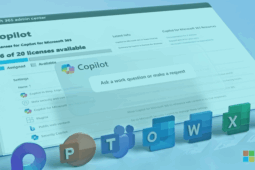As in any other area of computing, there are always new methods and advances in technology to improve the way we do things.
One of our core values at Stack8 is constant improvement. We pride ourselves in consistently figuring out how we can improve—and improving our methods for monitoring things is no exception.
The Evolution of Monitoring Tools
Monitoring tools have evolved from custom scripts to automated tools like OpenNMS, Cacti, Zenoss, and PRTG. And as the cloud becomes more popular and new deployments are being spun up, improved ways of monitoring workloads are also being devised. We can learn a lot from cloud native solutions to improve the way we make sure things stay online and available.
Prometheus
Prometheus appears to be the leader in monitoring tools, especially for cloud-native workloads. Here are a few things that can be checked using Prometheus and the related “exporter” software projects:
-
- Age/renewal of SSL certificates (via blackbox-exporter or ssl-exporter)
- Individual health of servers running Linux (node-exporter)
- Individual health of servers running Windows (windows-exporter: WMI)
- Metrics of VMware; vCenter deployments (vmware-exporter)
- Metrics from legacy systems via the existing SNMP protocol (snmp-exporter)
Of the above, snmp-exporter is the only one with a slightly higher learning curve. It requires complex configuration, generated in two steps, if you really want it to be tailored to your needs.
As well, windows-exporter makes use of WMI to monitor Windows machines instead of SNMP, which is being phased out (it does tend to lack some better security features).
Other Exporter Tools
There are many more exporter tools for Prometheus to monitor all kinds of software or appliances. This is what makes Prometheus shine: using a somewhat standardized format for metrics, that most people agree upon, so that many different pieces of software can interoperate. For example, if I wanted to monitor a MySQL server, I could easily install the mysql_exporter to retrieve metrics such as the number of users connected, query response times, and more.
The benefit from all of this is that one can, with minimal work, spin up new monitoring solutions alongside legacy ones, using the legacy protocols, to do an overhaul of their monitoring tools—installing the new tooling alongside the old, and slowly moving things off legacy solutions, so as not to lose historical data.
Monitoring is Crucial
This is where monitoring is crucial: you need data to know whether your systems work, and whether they are working well or about to fail. Similarly, you need historical data to be able to make predictions that will help in capacity planning and planning for disaster recovery.
At Stack8, we’ve been improving our monitoring solutions to get more data. This allows us to better help our clients and have a better idea of what is going on regarding the health of the systems we’re managing—enabling us to be more proactive.
Ready to take your unified communications from headache to hassle-free?
No throwing darts at proposals or contracts. No battling through the back-end. No nonsense, no run-around.



